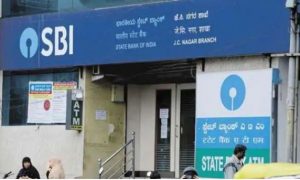India’s home-loan market is set for a dramatic change in the coming years as the country’s biggest housing finance company folds into a bank. HDFC Ltd is set to merge with HDFC Bank Ltd in 12-18 months, subject to regulatory approval. HDFC’s market share in overall housing loans was 31 percent in FY21, second only to State Bank of India (SBI), the largest bank in the country.
HDFC’s amalgamation into HDFC Bank would do three key things to the housing loan market. Firstly, the obvious outcome would be a reduction in the market share of housing finance companies (HFC) and a concurrent increase in that of the banking sector. Secondly, it would impact the growth and margins of HFCs as the heft of a large balance sheet coupled with access to low-cost borrowing would be tough to compete with. Lastly, HFCs may be driven towards riskier developer loans, which come with asset quality risks.
Read More:-DCB Bank share price gains 6% on RBI nod to reappointment of MD and CEO
HFC market share reduction
Currently, the home-loan market is dominated by banks and housing finance companies. A study by credit bureau Crif High Mark Ltd estimates that the home-loan market size was Rs 22.6 lakh crore in FY21. Of this, the banking sector accounted for 60 percent while HFCs held 38 percent.
Also Read | Proposed merger of HDFC Bank, HDFC to moderately hurt bank’s profitability: Moody’s
As such the top five lenders (both banks and HFCs) account for 80 percent of the market. Within HFCs, being the largest, HDFC Ltd had nearly half the market share. Therefore, after the HDFC’s merger, HFCs would account for just about a quarter of the housing loan market.
HFCs will struggle to grow
Beyond this it will get interesting for players in the market. Ashvin Parekh, a veteran banking consultant and founder of Ashvin Parekh Advisory Services LLP, believes that large HFCs would find it difficult to grow. “For HFCs the future is bleak, particularly for large and medium sized ones. The smaller sized ones, though, may continue to perform,” he said.
Read More:-Bandhan Bank’s fortunes are turning, IDFC AMC buy brings more cheer
This is because the competition for large-ticket home-loans is already intense and will only increase further. Banks have an advantage here due to their access to low-cost funds by way of public deposits. Emboldened by the low cost of borrowings, banks have been able to capture a large share of the home-loan market by pricing loans competitively. In fact, most banks do not charge any spread over their benchmark rate as home-loans are considered the safest asset.
The banking sector’s housing loan portfolio has expanded by 11.8 percent over the past five years on a compound annual growth rate (CAGR) basis. On the other hand, growth has been slow for HFCs as they have had to suffer high borrowing costs, especially during the pandemic. Even before the pandemic, the fall of Dewan Housing Finance Corporation Ltd (DHFL) dented confidence among HFCs, making their cost of borrowing shoot up.
Also Read | HDFC-HDFC Bank Merger: It was only a question of when, says TT Srinivasaraghavan
“Your cost of funds is a key component. HDFC, even before the merger, had the advantage of a large balance sheet, so their borrowing cost was low and they were more competitive. If they turn into a bank, they will gain more because of (the low) cost of funds,” said Prakash Agarwal, director and head of financial institutions at India Ratings and Research. He, too, expects the going to get tougher for HFCs.
This will hurt lenders such as LIC Housing Finance Ltd, PNB Housing Finance Ltd and perhaps even some banks. As such, HFCs have witnessed pressure on their loan growth after the pandemic.
Read More:-Nirmala Sitharaman praises free foodgrain scheme
Margin pressure
For HFCs, it is a double whammy: along with growth, their margins may also come under stress. As such, home-loans are products with thin margins as most banks refrain from adding a spread over their benchmark lending rate and non-bank lenders charge low spreads. HDFC Bank’s entry into mortgages with HDFC’s portfolio would heighten the competition on rates.
Notwithstanding its non-bank origins, HDFC commanded the lowest borrowing cost among non-bank lenders, an advantage that would sharpen after it merges with the bank. Incrementally, borrowers would gravitate towards loans priced lower even as the interest rate cycle turns upwards. Again, the margin pinch would be felt most by large HFCs that operate in the large-ticket-loan segment, comparable to HDFC. Smaller lenders may be able to protect themselves given the relatively mild focus of banks in this segment.
Affordable housing segment threat
Affordable housing has been a rising market segment that most lenders have found lucrative enough to pursue in the wake of dispensations from the government and regulators. Affordable home-loans have a ticket size of less than Rs 35 lakh. Further, as mature real estate markets stagnated in terms of growth, affordable housing provided the required support.
Read More:-Income tax department notifies new ITR forms. 5 changes you should not miss
The impact on HFCs here could be mixed. While public sector banks have increased their focus, HFCs still account for more than 40 percent share here. In fact, HFCs have been able to claw back their market share, according to analysts.
That said, HDFC has a sizeable market share in the affordable segment although its focus here is recent. The management has indicated that in the new avatar of HDFC Bank, the thrust on this segment will continue. Ergo, HFCs would see their market share coming under threat.
The developer financing conundrum
What analysts fear is the change in the non-retail book of HFCs, which consists largely of developer financing and construction finance. Though HDFC’s non-individual book is less than a third of its portfolio, it is a big lender to real estate builders. Construction financing is a lucrative business in terms of margins as loans to developers carry a wider spread given the inherent risk in real estate. Lending to real estate by banks is heavily regulated and the Reserve Bank of India (RBI) frowns upon an increase in exposure. After the merger, HDFC Bank may either maintain its share of developer finance or prune it, depending on regulatory comfort.
At the same time, other HFCs may load up on riskier developer finance from here on. Such loans would be easy pickings in the wake of general pressure on margins in the retail book. While developer finance is good for margins, such risky loans tend to increase the stress level in the portfolio. This segment has been a source of pain for HFCs such as LIC Housing Finance and PNB Housing Finance during the current downturn.
The movement in share prices of HFCs in the past one month reflects the distinction in the quality of books that investors perceive. Those loaded with retail loans have had an easy pass with investors, while portfolios heavy with developer loans have suffered. Some, such as Indiabulls Housing Finance, have intentionally pruned developer finance and focused on the retail business to gain investor acceptance.
The upshot is that HFCs may have to choose between being niche players or merging with banks because the home-loan market is now firmly in the grip of banks.





































